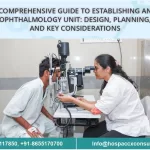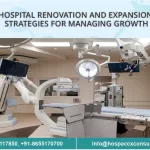Hospital Medical Equipment Planner
INTRODUCTION
Medical equipment is a vital component in healthcare delivery. Equipping health facilities need detail planning and coordination, clinical needs and the equipment requirements are met with the design and function.
The ultimate objective is to ensure all products selected are fit for purpose, within budget and, procured, delivered and commissioned in accordance with projects build programme.
Considering the above facts, Hospaccx team work on the market trends and dynamic regarding equipment planning for upcoming hospitals. This is macroficial study of How to do Equipment Planning for Upcoming Hospital, if you want to get into more detail you can contact hospaccx.india@gmail.com
Overview of Indian Market Device or Equipment
- The medical devices market in India is moving at a rapid pace; this sector contributes to about 5% to the $96.7 billion generated by the health sector annually.
- Presently, the medical devices industry has a market size that is worth $5.2 billion and about 750–800 medical device producers in the country.
- With the present growth rate which is approximately 15.8%, the market will increase to a market value of $ 50 billion by 2025.
The above graph shows the segment wise market of medical equipment or devices in India.
PROCESS OF EQUIPMENT PLANNING
Medical Equipment Planning involves equipment survey, budgeting, selection, technical specifications and procurement of medical equipment, taking into account the required level of technology, program planning objectives and available budget. Each project is unique and the first thing is to understand the strategy and scope of the project and determine the equipment needs.
Equipment Assessment
An audit of existing major and minor equipment to evaluate their efficiency in terms of functionality and cost. To ensure that all categories of equipment are accounted for and included in the appropriate budget, prepare a Responsibility Check List that specifies responsibilities for planning, procurement, receiving and installation.
Evaluate efficiency and useful life of current equipment
Determine equipment reuse and relocation options
Develop list of new equipment Prepare initial budget
Budget Preparation
Understanding that every facility has different needs and different financial situations.
Conduct department interviews to understand equipment preferences, concerns and priorities. Perform architectural reviews to identify elements that may affect the function and design of the building and equipment or inhibit the staff.
Equipment Specifications
Once equipment specifications – also known as Construction Documents – are finalized, prepare the specifications in bid-package format and create a Bidders List.
Procurement
The most costly part of the equipment planning process is often the purchase of the equipment itself. Our objective is to procure the equipment at the lowest possible cost, taking into account the priorities and preferences.
Receiving and Logistics
Coordinate with the architect, the general contractor and design team and manage the performance of manufacturers and vendors to ensure the safe delivery of your equipment and a successful, on time installation.
POINTS TO CONSIDER WHILE MEDICAL CAPITAL EQUIPMENT PURCHASING
Go for the Warranty. Many healthcare vendors offer maintenance service and warranty contracts for their equipment. Read through the contract, but in most cases these warranties are well worth the minimal added fees.
- Plan for Space and Development. Every room in a healthcare organization, whether it’s a patient room or a clinical laboratory, has its own unique demands. So before you assign a label to a room, ensure its design undergoes collaborative brainstorming between design experts, contractors, and healthcare personnel for efficient spaces that enhance patient satisfaction, utilization, and even revenues.
- Collaborate with an Equipment Planner. A medical equipment planner has the knowledge and experience to help evaluate your organization’s needs along with the total ownership costs of medical equipment, as well as ensuring everything conforms to local regulations.
- Equipment Delivery Process. Research vendors and distributors and select one that offers direct-to-site services with an excellent track record. A good vendor will ensure that everything is properly labelled and that equipment gets delivered on time and to the desired end-room.
- Checking Regulations. Every healthcare-oriented facility has its own regulations in regards to local building codes, federal and state legislature, and industry standards that it must conform to. During the planning process, identify with regulations will apply to your purchases and how you can follow it.
- Prevent Patient/Workflow Interruptions. This point bears repeating; ensure that the delivery and set-up of all medical equipment purchases are timed effectively. Ideally, one have this done just before opening or closing or other downtime periods when there is a minimal amount of patients in the building.
- Involve the Appropriate Departments. Any department that will be regularly interacting with the new equipment should participate in the entire capital equipment procurement process. This will protect the group from purchasing equipment with expensive, unneeded features or functions, as well as getting the appropriate feedback for future options.
- Inspect and Test Before Ownership Transfer. Before signing the final papers, have your Biomedical Engineering technicians inspect the equipment. They should do an electrical safety inspection as well as testing for operations before they give the final affirmation.
CHALLENGES RELATED TO HEALTHCARE FACILITY EQUIPMENT PLANNING
Technology Challenges
The first step is to identify the challenges inherent with the installation of new technology in a facility. Some key aspects to consider include:
- Physical size: How large is the equipment and what are the required dimensions of the treatment room?
- Weight: Is the equipment heavy and does the flooring need to be reinforced?
- Access: What access must be provided for operating personnel, patients and service staff?
- Utilities: What utilities are needed?
- EHR connectivity: Any additional software required?
- Hazards: Are there any specific hazards?
Equipment planners need to identify technology requirements as early as possible.
Equipment Procurement
This issues include the identification of suppliers, negotiations, service contracts and equipment delivery. Equipment planners need to procure ancillary equipment and to establish its installation requirements and costs. They should consider the protection and storage prior to installation because the facility may not have suitable storage areas to accommodate and pre-assemble the equipment before installation.
Project Management
Because equipment installation time frames are usually tight, the project must be professionally managed by equipment planners and/or project managers. This specialist role requires expert knowledge and experience to ensure target dates are met, disruption is minimized and costs are controlled. Delays are costly and unless every single aspect is properly coordinated, they are almost inevitable.
CONCLUSION
Opening a new hospital is a huge transaction for an organization. New technologies coupled with persuasive process modifications create significant change behaviour. Healthcare providers worldwide are facing an increasingly competitive environment. In this changing technologies and competitive environment, healthcare institutions need to be updated accordingly. Hence they must consider the cost and others aspects of medical equipment and plan accordingly.Are you planning a medical equipment for your healthcare organisation? We can help you to plan a medical equipment for your healthcare organisation, below are the equipment planning services that we offer:-
- Medical Equipment Planning
- Medical Equipment Budgeting with Need Assessment
- Planning of Pre-installation Services
- Delivery Coordination
- Equipment Installation Supervision
- Inventory Audit
- Infrastructure Adequacy Check
- Integration of Medical equipment with IT/PACS
- Procurement Management
It is the superficial and macro level study for more details kindly contact Hospaccx Healthcare business consulting Pvt. ltd on hospaccx.india@gmail.com Or you can visit our website on https://hospaccxconsulting.com/










